What tyre width do pro cyclists use on the cobbles?
Wide tyres are already used by most pro cycling teams across the season but when the race includes cobbles, they go even wider
Alex Hunt
Junior Tech Writer
© GCN
32mm tyres were seen ahead of E3 Saxo Classic
The E3 Saxo Classic is often cited as the dress rehearsal for the Tour of Flanders, featuring some of the same cobbled climbs as its Monument big brother. The comparable parcours offer riders and teams the perfect opportunity to give their equipment choices one last shakedown providing a great insight in to what the teams will be using for Flanders.
In recent seasons, the width of tyres used by teams has been steadily increasing from 23mm around a decade ago to the almost standard 28mm used today. Cobbled races look to push this trend even further with teams looking for wider rubber to provide a crucial advantage over the cobbled climbs of Belgium.
At the start of E3, we scoped our some riders' bikes to work out just how wide the pros are going, and how it makes a difference in the Classics.
How are wider tyres an advantage for cobbled races?
Wider tyres offer multiple benefits for riders taking on the Cobbled Classics. Firstly, they offer more grip which can be incredibly beneficial over the cobblestones, especially in the wet. Wider tyres present a larger contact patch with the road which in turn increases the traction available to the tyre.

© GCN
Cobbles are the ultimate test for bicycle tyres with the edges of each stone capable of causing a puncture
Secondly, one of the main advantages of wider tyres is the vibration-dampening quality they offer. The higher-volume tyres can be used at considerably lower pressures. The lower pressure of the tyre and the larger profile of the sidewall allow it to act as a damper over the cobblestones. Not only does this reduce the cumulative fatigue put on the riders over repeated sections of pavé but it is also more efficient as less energy is wasted in bouncing around on top of the cobbles. A wider tyre can be thought of essentially as a very small suspension unit, isolating the rider from the surface below.
Another benefit of wider tyres is that they are far less susceptible to punctures. This comes back to the fact that they are run at lower pressures and have a larger contact patch with the road. This means that anything that might cause a puncture will exert less force on the surface of the tyre when compared to a narrower one.
What tyre width do teams run on a non-cobbled race?
At Brugge-De Panne earlier in the week we were able to check in with most of the teams before the start to find out what tyre width they would be using. Overwhelmingly the most common tyre width being used at this race was 28mm. This is not to say it was the only width in use, however, with the Specialized teams of Bora-Hansgrohe and Soudal Quick-Step both running 26mm versions of the S-works Turbo tyre.
- Read more: Do wider tyres on your bike make you faster?
The narrowest tyres on display at Brugge-De Panne were being used by Cofidis and Tudor Pro Cycling, both opting for 25mm tyres. Taking the crown for widest tyres were UAE Team Emirates as well as a select few riders from EF Education-Easy Post who were running 30mm tyres.
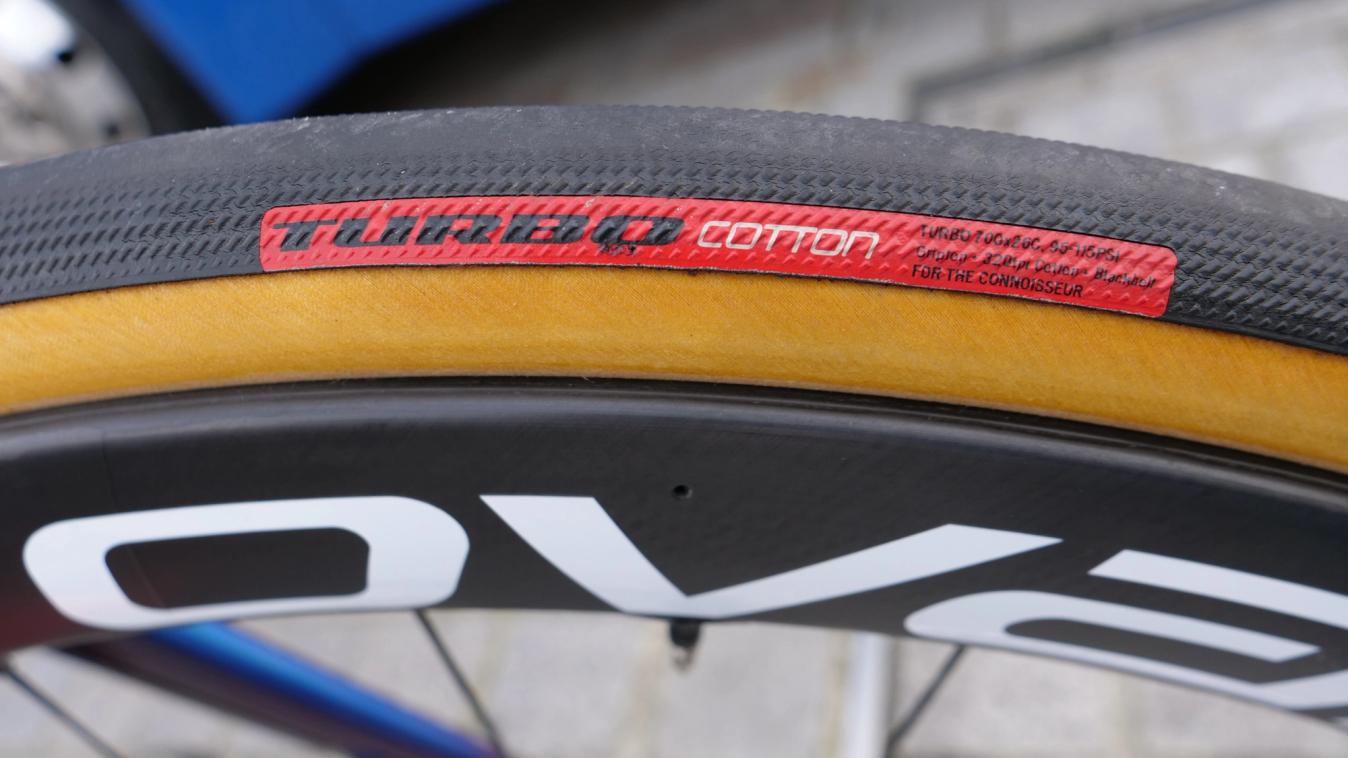
© GCN
Soudal Quick-Step were using 26mm tyres for Brugge-De Panne but made the switch to 28mm for E3
What width tyres did the teams use at E3?
Although there was not a unified consensus on exactly what the perfect tyre width was for the E3 Saxo Classic, one thing was clear, almost all teams were using wider tyres than they had two days prior at Brugge-De Panne.
28mm tyres
Apart from Team Flanders-Baloise who were using 25mm tubular tyres, the narrowest tyres that teams were using was 28mm. Ten of the 25 teams were using 28mm tyres including Soudal Quick-Step and Groupama-FDJ.
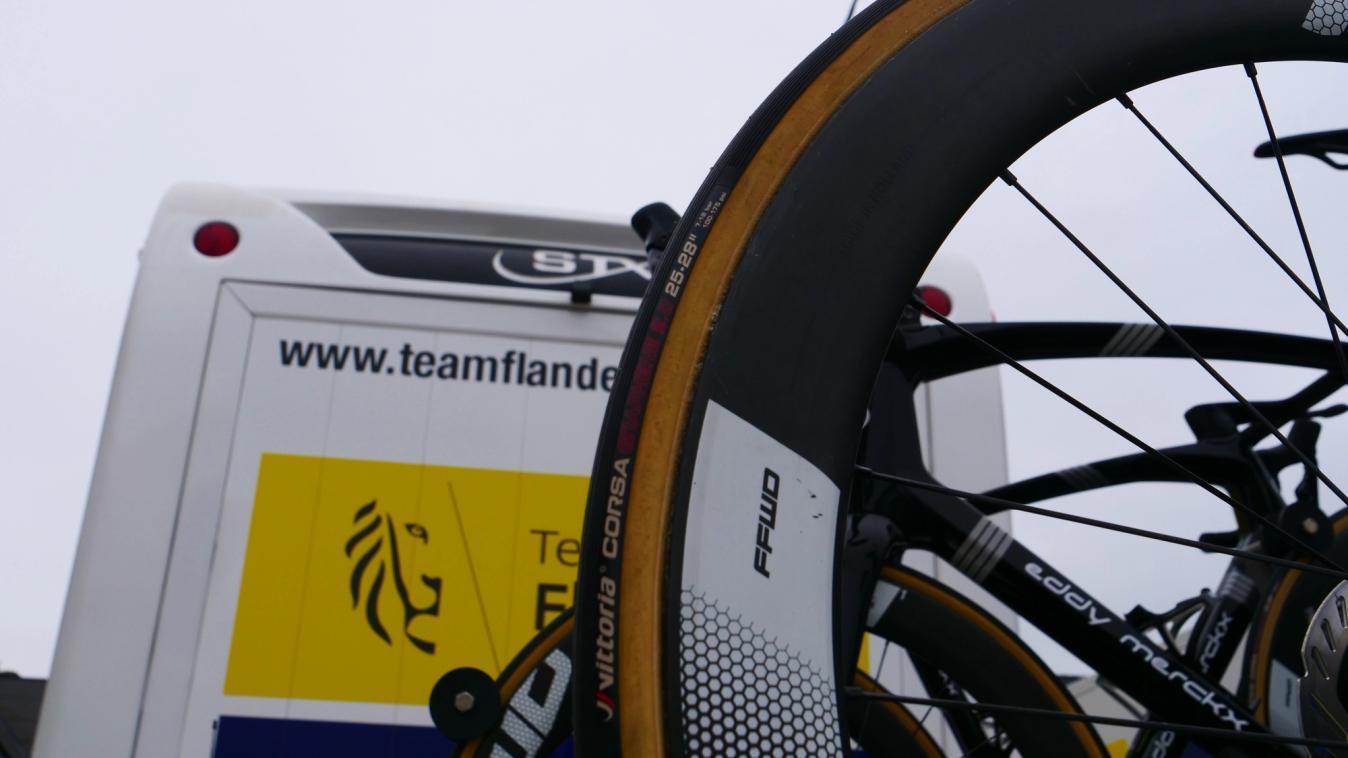
© GCN
Team Flanders-Baloise were out on there own as the only team using 25mm tubular tyres over the cobbles
30mm tyres
Only one team currently uses 30mm tyres across its road programme: UAE Team Emirates. This width is something that only a couple of seasons ago would not have even fit on some top-spec race bikes. However, with the trend for wider tyres in full-swing, bike design has caught on with the latest generation of aero-optimised race bikes able to accept 30mm and wider. In total 12 teams were using 30mm tyres including Visma-Lease a Bike and Alpecin-Deceuninck.
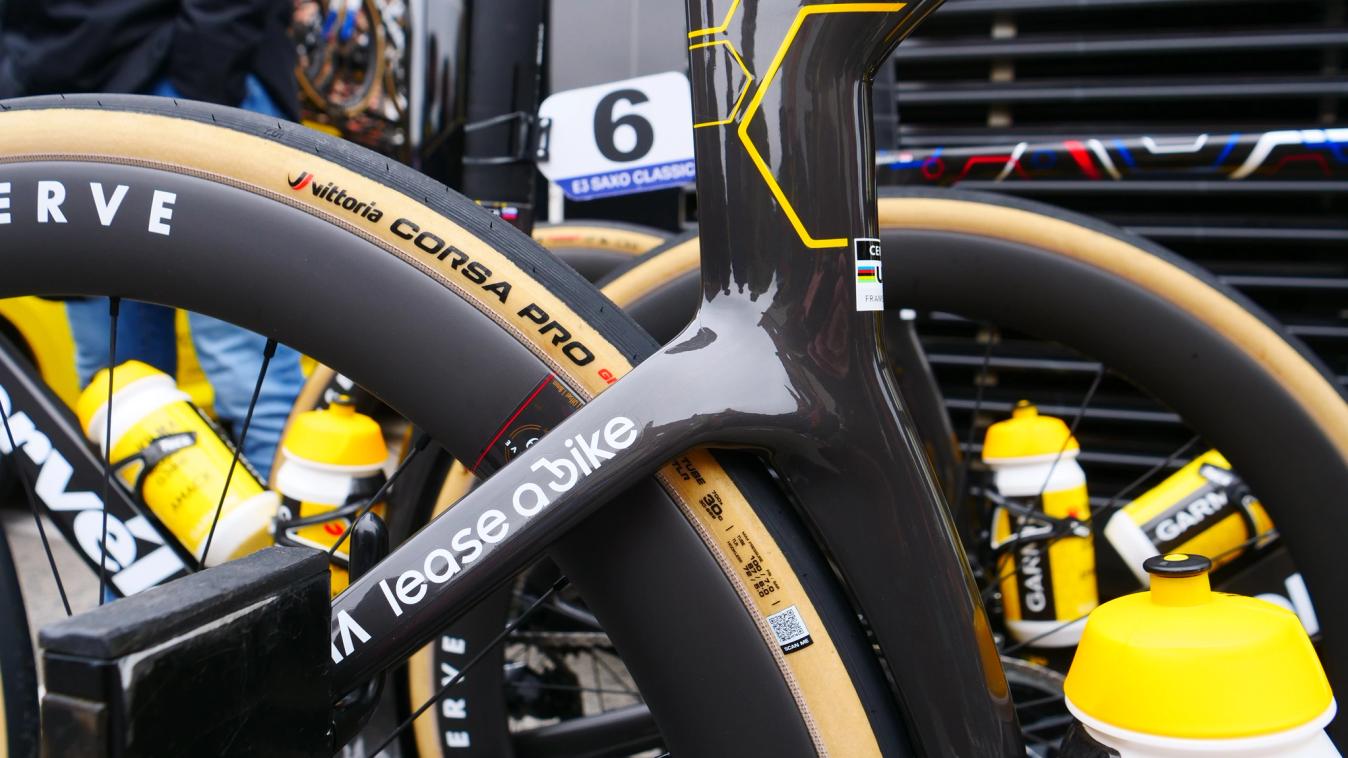
© GCN
Both the pre race favourites Wout van Aert and Mathieu van der Poel were using 30mm tyres
32mm tyres
30mm was not the widest tyres on display ahead of the race with a selection of Astana Qazaqstan riders using 32mm tyres. Joining them were Ineos Grenadiers who were using 32mm continental GP5000TR tyres. Interestingly, Ineos Grenadiers running 32mm tyres means they are 4mm wider than Pinarello's officially certified use with the Dogma F. Although the tyres do fit, they leave very little clearance around the bottom bracket area and fork.
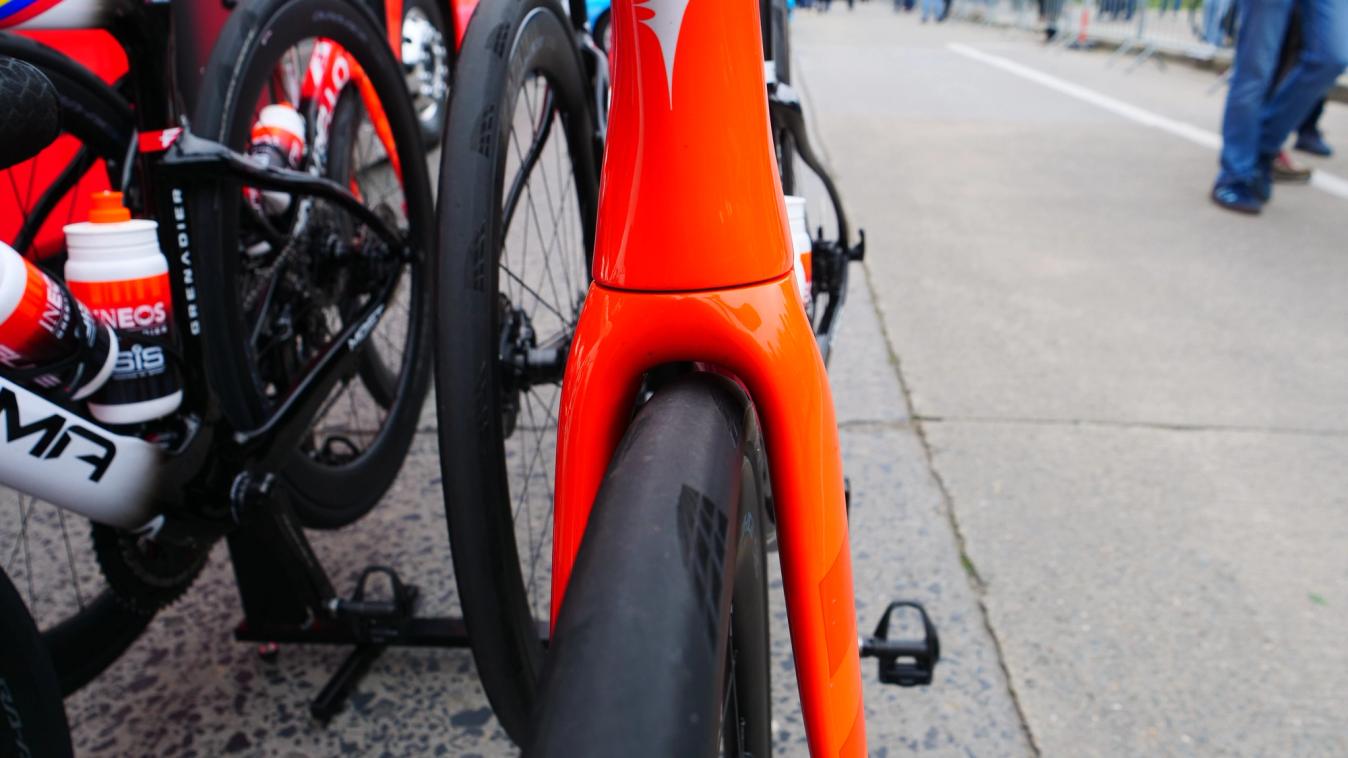
© GCN
Ineos Grenadiers were seen using the widest tyres in the peloton at 32mm some 4mm more than Pinarello official certify for use with the Dogma F
Tubeless undeniably dominant
In a race that can often be affected by punctures, most riders have made the decision to run tubeless tyres. The lack of an inner tube that can get pinched on the cobbles greatly reduces the risk of getting a race-altering mechanical. One omission to this trend was one of the pre-race favourites Mads Pedersen who opted to use the tubular version of Pirelli P-Zero Tub SL tyres rather than the prototype tubeless tyres spotted earlier in the week. Although not as puncture resistant as a tubeless setup, tubular tyres do allow riders to more confidently carry on riding on a flat tyre until they can get service from the team car.
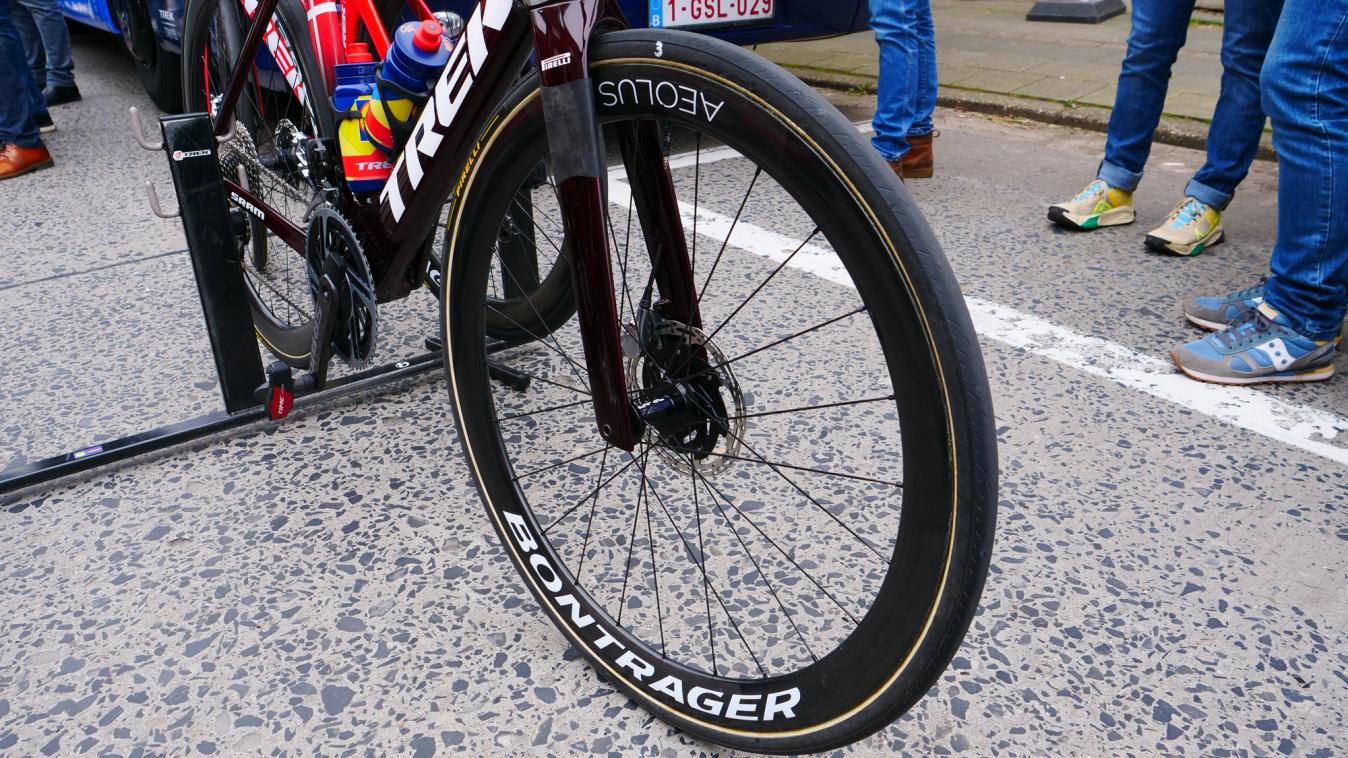
© GCN
Mads Pedersen was spotted using tubular tyres rather than the prototype tubeless tyres spotted earlier in the week
Although not everything the pros do should be emulated by recreational riders, the move to wider tyres and lower tyre pressures is definitely something that we can all benefit from. For a lot of us, we spend a lot of time riding around on less than perfect tarmac where the benefits of wider tyres can offer a significant benefit both in terms of performance and comfort.
What tyre width do you use? Let us know in the comments section below. For even more bike-related tech content, head over to the dedicated tech section of the GCN website.
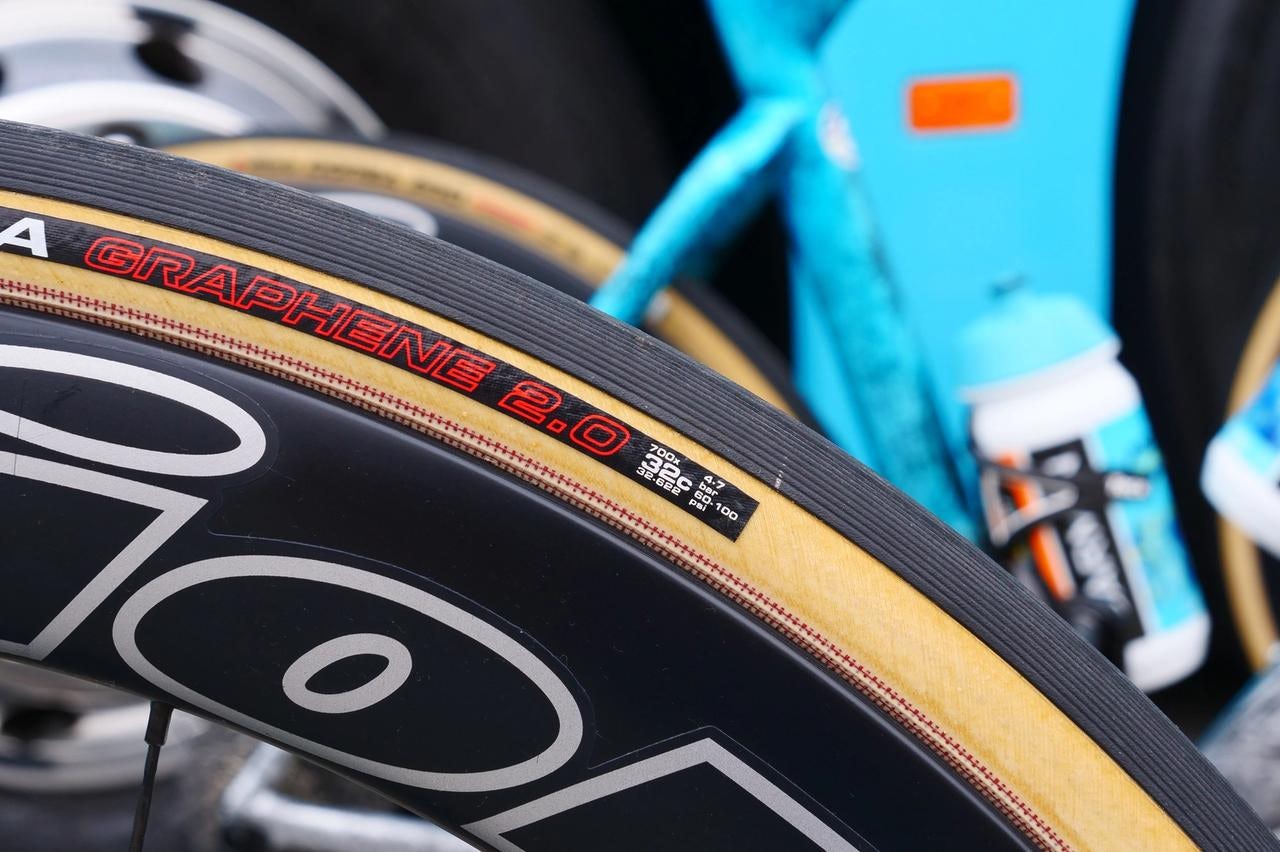











.jpg?w=600&auto=format)


